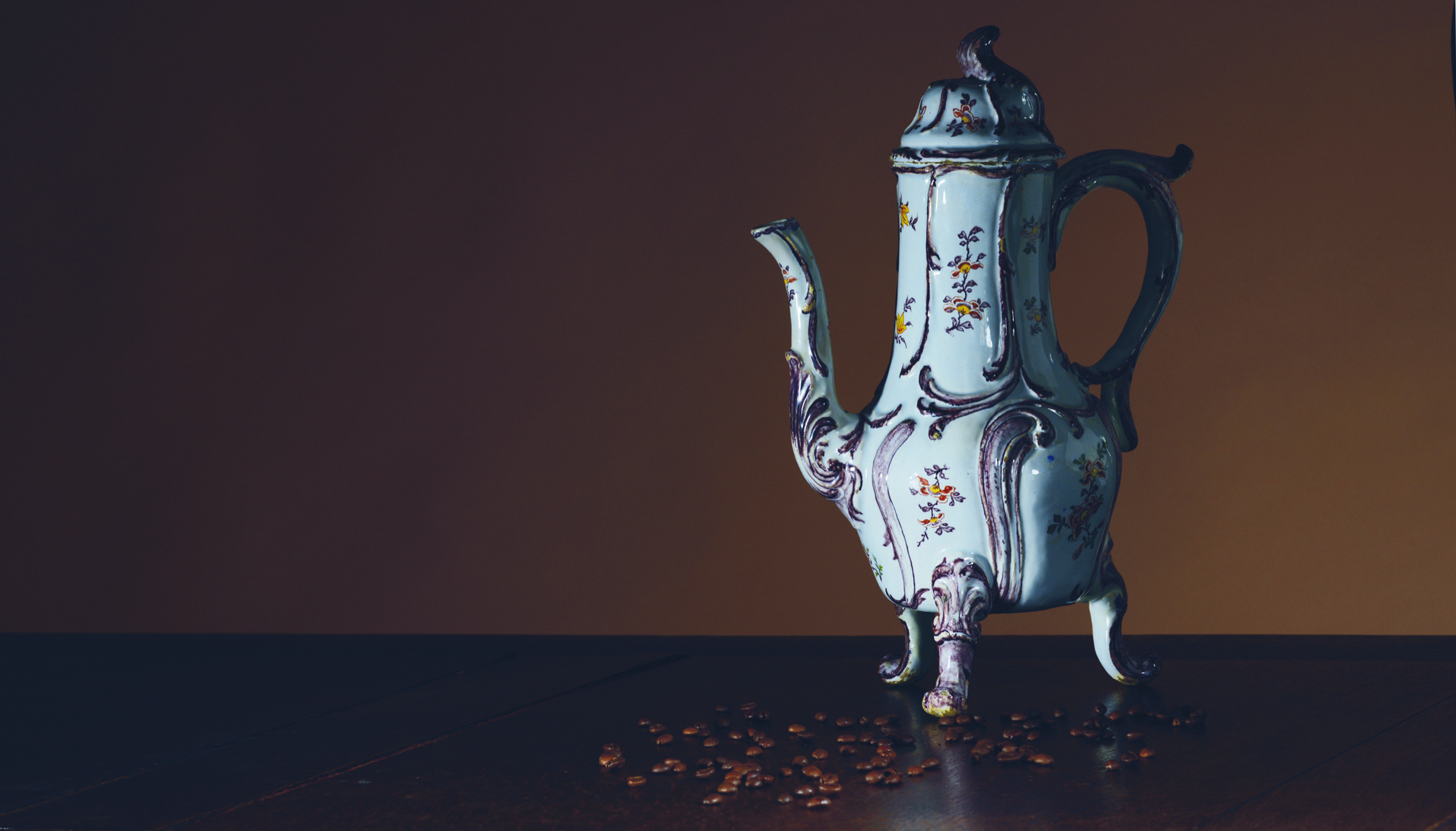
The Artistry of Jacobus Halder
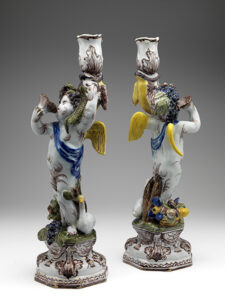
In 1658 ‘De Grieksche A’ (The Greek A) transformed from a beer brewery into a pottery factory, retaining its name and flourishing into one of the most successful potteries in Delft. Under various skilled and innovative owners, the factory produced high-quality Delftware well into the last quarter of the eighteenth century. Its success is underscored by its esteemed clientele, including the Dutch Royal Court.
Innovative owner of De Grieksche A (The Greek A) 1764-1768
Jacobus Adriaensz Halder, owner of ‘De Grieksche A’ from December 1764 to 1768, bequeathed a compelling legacy marked by his commitment to innovation and the production of high-quality goods. The Delft faience created during his tenure, featuring a range of distinctive models bearing Halder’s signature, hints at his creative prowess. Unfortunately, little information is available about his personal life and the brief period during which he owned ‘De Grieksche A’. This article will shed light on this intriguing period and the diverse products manufactured by exploring the objects carrying his signature.
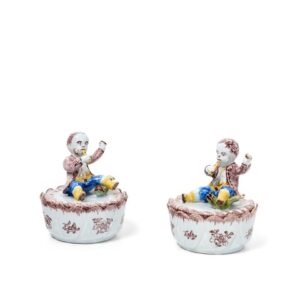
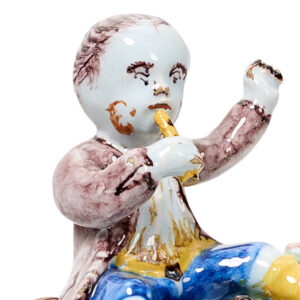
Jacobus Adriaensz. Halder was born in September 1741 to Margaretha van Rheenen and Adrianus Halder. He married Johanna Radder in 1763. After acquiring ‘De Grieksche A’ from Jan Theunis Dextra in 1764, the couple welcomed their daughter Adriana the following year. While the purchase price remains unknown, it is evident that Jacobus possessed a substantial capital. Johanna Radder, Jacobus’s wife, might have inherited funds following the passing of her first husband, Hendrik Altman, which could have been utilized to acquire the factory.
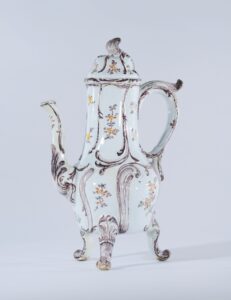
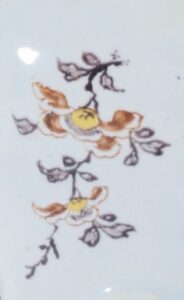
Jacobus was initially identified as the owner, and later underwent a change in designation. At the registration of his trademark ‘A IH’ in 1765, he is described as shopkeeper, indicating his successful completion of the exam administered by the Saint Luke’s Guild. (1) By the time he sold the factory to Johannes van Briel and Petronella van der Laan three years later, Jacobus had earned the title of a master potter. (2)
Halder’s Legacy
Halder’s legacy encompasses traditional blue and white Delftware, figurines and figurative tableware, and a distinct group of petit feu Meissen-style rococo objects. The latter group, highlighting significant innovation, reveals a strong commitment to pioneering ideas during a period when Delft potters encountered intense competition from English creamware and German porcelain. Considering the relatively small number of objects within this group, it suggests that it either experienced limited success or faced a shortage of skilled employees after Halder sold the company.
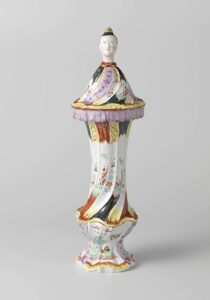
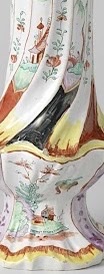
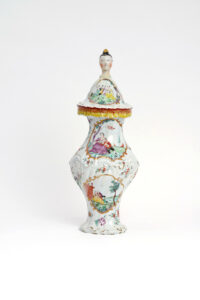
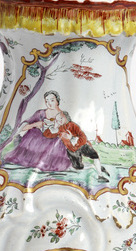
Though the identity and precise number of painters active at ‘De Grieksche A’ during Halder’s ownership remains unknown, Halder himself was also acknowledged as a master painter towards the end of his directorship. (3) In fact, there is a notable resemblance among certain objects that hint towards a specific painter, perhaps even Halder himself.
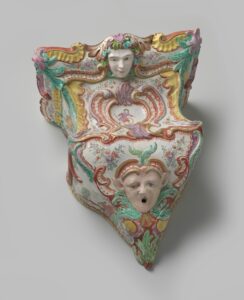
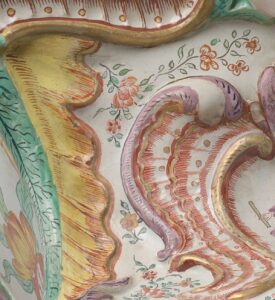
One example is an extraordinary, unmarked putti figurine from the Aronson Collection, depicting the allegory of astrology (fig. 1). It exhibits a strong resemblance in decorative details to a pair of candlesticks, marked with A IH for Jacobus Halder from the collection of the Arnhems Museum (fig. 2). Manganese circles accentuated by tiny dots adorn the belly button, breast, and cheeks. The luscious manganese hair shows great similarity when comparing the three putti. Not only is there similarity between the bright blue and yellow colors on the wings and sash, the typical lines accentuating body folds are also alike. The resemblances are so remarkable that attributing the unmarked putti figure to Jacobus Halder is inevitable.
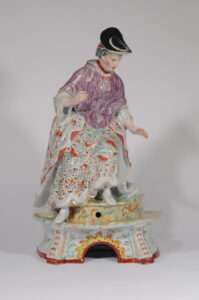
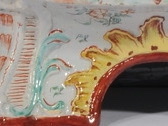
These details, along with others, seem to be recurring elements across various Delft objects, both marked and unmarked. This discovery has sparked further investigation, leading to intriguing further attributions of the products crafted during Halder’s directorship.
Identical Details
The following examples, all bearing the distinctive mark ‘A IH,’ exhibit identical details including significant manganese or blue brushstrokes and fine floral branches scattered over the object. The strokes, at times accompanied by delicate dotted lines, skillfully highlight folds and shadows on the objects’ surfaces. This is illustrated on a pair of marked butter tubs featuring a boy holding a whistle (fig. 3). The finely detailed floral motifs are seen on other objects, such as the putti figurine (fig 1), a coffee pot (fig. 4), two distinct Meissen-style lidded vases (fig. 5-6), a fountain (fig. 7), and a figural fountain (fig. 8). The latter four items share another distinctive characteristic in the shape of c-volutes in yellow, embellished with delicate chains of fine red lines. Given the mentioned details, it is highly plausible to attribute the unmarked figural fountain (fig. 8) to ‘de Grieksche A’, as it exhibits identical characteristics.
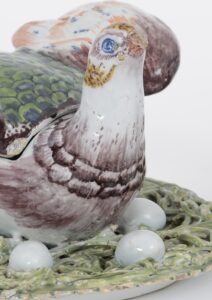
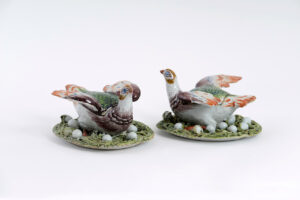
The unique brushstrokes highlighted in figures 1-3, emphasizing shades, fur, and fabric, are also discernible in figures 9-11. Even the coffee pot (fig 4) exhibits similar brushwork. Throughout these pieces, a consistent warm salmon hue emerges, visible in various elements such as the rosy cheeks of the boys on the butter tureens (fig. 3), sections of floral patterns on the coffee pot (fig. 4), the wings of hen tureens (fig. 9), and the horns of reclining cow tureens (fig. 10).
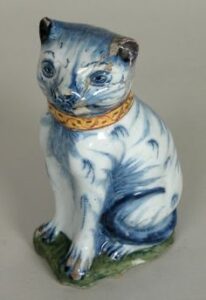
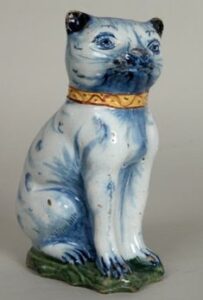
The resemblances in intricate details provide a compelling basis for attributing unmarked objects to the Greek ‘A,’ thereby in dating them to Halder’s directorship with a high level of certainty. Subsequent research may shed light on whether these details represent Halder’s distinctive signature.
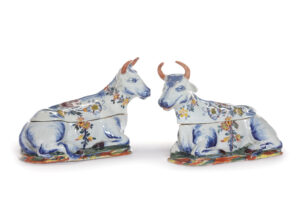
Notes
- City Archive Delft, Inv. nrs. 14.60, folio 265, 24/9/1741 and 1.2589, folio 65, 5/9/1763
- Wik Hoekstra-Klein, ‘Geschiedenis van de Delftse plateelbakkerijen, Deel 9, De Grieksche A’, 2003, p.133 and p. 164
- Hoekstra, 2003, p. 41
